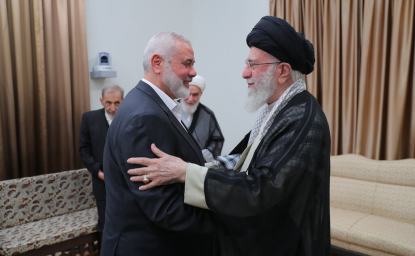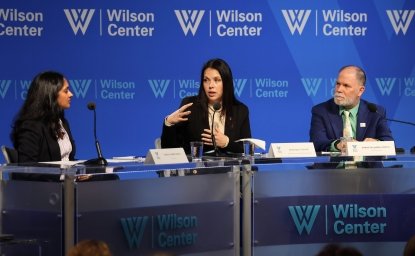Islamists are not “one size fits all.” Indeed, by 2015, the new spectrum was a labyrinth. The parties generally broke down into three broad categories, according to Egyptian experts Ismail Alexandrani and Dina Shehata.
The first and most basic category is classical Islamism. Its goal is to implement Islamic law, or Sharia. Its political face focuses on ensuring that a government complies with fixed scriptures or texts. Classical Islamists demonstrate little adaptability. They trust clerics and religious scholars to speak and act on behalf of the people.
Classical Islamists differ by sect, however, because of the disparate powers of their respective clerics. As a result, pure Islamism among Shiites is more likely to produce theocratic rule. Among Sunnis, pure Islamism is more likely to produce authoritarian rule, but not a theocracy. The difference dates back to the original schism within Islam in the seventh century over leadership and politics.
In Shiite Islam, the clerics are empowered to interpret God’s word to the faithful. As in Catholicism, the clergy has absolute power, which in Iran was translated into political power after the 1979 revolution. The clerics literally ruled. Classical Shiite Islamism also considered the citizen to have responsibilities and duties, but not rights. Iranian revolutionary leader Ayatollah Khomeini epitomized the classical Shiite Islamist.
In Sunni Islam, clerics are only advisers to the faithful. So in Islamist societies dominated by Sunnis, recognized clerics are unlikely to become the rulers. Instead, Islamist leaders are more likely to be secular politicians or pseudo-clerics who want to invoke Islamic law, often with a singular vision. Classical Sunni Islamism has a ceiling on rights based on what was allowed in Islam, which would preclude alcohol, pornography, and homosexuality. The writings of Egyptian thinker Sayyid Qutb reflected classical Sunni Islamism.
The Salafis are also classical Islamists. But they have their own subsections, again reflecting the Islamist maze. Some are passive politically; others are virulent extremists. Among them are the following five broad categories:
- The traditional or scholarly Salafis are basically “schools” gathered around specific clerics.
- The scientific Salafis are focused on learning Sharia but not on going into politics, except that they tended to vote as a bloc.
- The new generation Salafis—such as the Costa Salafis, who were named after a chain of Cairo coffee shops where they tended to hang out--are from a younger generation. They do not necessarily take orders from their ultraconservative sheikhs and do share many of the original Tahrir Square protesters’ demands for political openings.
- The ex-jihadi Salafis include former extremists who renounced violence and were largely in the Salafi political camp.
- The jihadi extremists are dedicated to destroying their own states or joining causes with similar groups in other territories.
The second broader category is neo-Islamism. Its members are more flexible, informed, and mature in their political outlook. For them, Sharia is about values, civilization, and political context. Neo-Islamists are seeking the ultimate objectives of Sharia but without bonding each situation to a certain religious text. They believe that Islam is dynamic and not a set of fixed rules and tenets, but rather an organic belief system that can adapt to or live with the times. Neo-Islamists can be progressive and, on some issues, even liberal. Neo-Islamists trust the reform scholars.
As the Muslim Brotherhood moved openly into politics, it began to shift from classical Islamism to neo-Islamism, according to the two Egyptian experts. But the Brothers also had their own internal factions, each of which tugged the movement in a different direction: A conservative faction had unquestioning fealty to the organization and its dictates. A nationalist faction defined its agenda on the basis of the public interests of all Egyptians. And a neo-liberal faction, which was reflected in an emerging business elite, envisioned the spread of Islamist goals through development or economic renaissance.
But the Brothers also had up to twenty different trends within the movement, according to Khaled Hanafy, an ophthalmologist who was elected to parliament in 2011. “We share great principles, and within those principles we respect the differences,” he said. “We differ on education, culture, and the economic state. I even differ from my wife, who also ran for parliament. It is very good for the organization to have differences.”
The Brotherhood remained largely in the classical camp, however, because it invoked tight discipline over its members after deliberations. “When we decide, there is one opinion,” Hanafy added. “The majority decide, then the minority should obey.”
The third broader category is post-Islamism. Its adherents separated religious and political discourse, although they did not divorce values from politics. They would not, for example, embrace classical secularism. They did not publicly propagate Sharia, but as individuals they might be committed Muslims and consider ethics to be pivotal in political life.
Post-Islamists also believe that the people are the basis of political authority and power. They recognize peoples’ responsibility for their choices. Post-Islamists removed the ceiling on rights, which were no longer limited by religious texts. And they trusted people’s religious consciousness—without needing to rely on clerics or scholars. Turkey’s Justice and Development Party was the best example of post-Islamism.
Photo credit: Imam Khomeini via Instagram; President Mohamed Morsi via his official Facebook page.
Author


The Islamists
Learn more about Hamas and how it relates to similarly aligned organizations throughout the region. Read more

Explore More
Browse Insights & Analysis
Israel Escalates Attacks in Gaza: What’s Next?

Israel Expands Operations on Multiple Fronts: Perspectives on the Conflict

